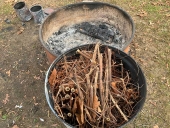
 8
8




 2
2




 3
3




Check out Redhawk's soil series: https://permies.com/wiki/redhawk-soil
 3
3




 2
2




Check out Redhawk's soil series: https://permies.com/wiki/redhawk-soil
 5
5




 1
1




 1
1




Check out Redhawk's soil series: https://permies.com/wiki/redhawk-soil




Check out Redhawk's soil series: https://permies.com/wiki/redhawk-soil
 3
3




Carbon Negative Stove plans available at:
https://www.carbonconsciouscreations.com




 1
1




Douglas Alpenstock wrote:will be ground up by freeze/thaw over time.
A build too cool to miss:Mike's GreenhouseA great example:Joseph's Garden
All the soil info you'll ever need:
Redhawk's excellent soil-building series









Check out Redhawk's soil series: https://permies.com/wiki/redhawk-soil
 3
3



















 1
1
















Check out Redhawk's soil series: https://permies.com/wiki/redhawk-soil








Check out Redhawk's soil series: https://permies.com/wiki/redhawk-soil




 3
3




Phil Stevens wrote:I got lucky and found a machine that crushes my biochar into a nice crumbly mixture.
 2
2




 1
1




Sam Thumper wrote:I'm trying to imagine how someone would do harm with fish hydrolysate are teenagers trying to huff, snort or smoke it? pure insanity.
As for mesh size, I believe I heard that 200 micron mesh would be fine for fungal tea, does that sound right to you?
Check out Redhawk's soil series: https://permies.com/wiki/redhawk-soil




 1
1




Check out Redhawk's soil series: https://permies.com/wiki/redhawk-soil
 1
1




Check out Redhawk's soil series: https://permies.com/wiki/redhawk-soil
 1
1





 2
2




Life on a farm is a school of patience; you can't hurry the crops or make an ox in two days.
Henri Alain
 1
1




Check out Redhawk's soil series: https://permies.com/wiki/redhawk-soil











 1
1




Check out Redhawk's soil series: https://permies.com/wiki/redhawk-soil







 1
1








Check out Redhawk's soil series: https://permies.com/wiki/redhawk-soil















Check out Redhawk's soil series: https://permies.com/wiki/redhawk-soil
 2
2




Phil Stevens wrote:Even powdered biochar will still have about the same water retention as granular or lump material. You would need a really fine grind to start breaking it down to the point where you lose the porosity. I don't think a garbage disposal will get it that small....we're talking about nanometer scales here. Try it and see...weighing up samples is easy.
The bigger discussion is the actual water holding capacity of pure biochar compared to mixing it with soil. My average sample holds three times its weight at saturation, but in consulting my Big Book I see a caveat in chapter 19: Much of this is in the spaces between the particles, and when you get soil into the picture things change. The other thing that happens is that clay and soil microbes will clog pore entrances over time, which reduces the ability of water to get in and out quickly.
Carbon Negative Stove plans available at:
https://www.carbonconsciouscreations.com

|
I'd appreciate it if you pronounced my name correctly. Pinhead, with a silent "H". Petite ad:
The new gardening playing cards kickstarter is now live!
https://www.kickstarter.com/projects/paulwheaton/garden-cards
|







